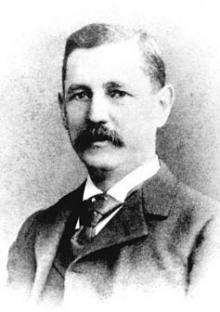
Florida might still be a large swamp today if not for the genius of one businessman, who might be considered the Sunshine State's founding father.
The federal government's assessment of the Everglades in the 19th century found it “suitable only for the haunt of noxious vermin or the resort of pestilent reptiles. The statesman whose exertions shall cause the millions of acres they contain, now worse than worthless, to teem with the products of agricultural industry; that man who thus adds to the resources of his country ... will merit a high place in public favor, not only with his own generation, but with posterity. He will have created a State!”
Hamilton Disston of Philadelphia seized the opportunity in 1881, and he got a good deal. Because politicians had run the state into debt, he was able to get 4 million acres at two bits an acre, becoming the largest landowner in the United States.

Disston set about to build levees, canals and whatnot to catch and divert the spillover from Lake Okeechobee.
Understanding Florida's incredibly complex ecosystem is far above my pay grade, but it works something like this: An awesome amount of rain falls in the state. Much of it winds up in Lake Okeechobee, which is wide but shallow. Too much and it overflows, running south into the wide expanse called the Everglades.
Draining large tracts of land, the thinking went, would allow agriculture and promote growth. Gov. Napolean Bonaparte Broward of Jacksonville was a big proponent.
Even though Disston never was able to complete his plans, many Florida towns sprang up as a result of his efforts, including St. Petersburg and Miami. Other visionaries such as Henry Flagler and Henry B. Plant followed with railroads and hotels that promoted growth, jobs and wealth.
Naturally, the presence of larger numbers of humans had an impact on the rest of the environment. By the late 1940s, it was being noticed, and it wasn't all good.
Government then stepped in with various flood control projects and other remedies. But government is not God and its efforts to improve His works sometimes make things worse.
Everything from algae blooms to invasive species bedevil the state but rational people continue finding feasible ways to protect water supplies, beaches, glades and everything else that make Florida the most desirable state in the nation.
Other round of government intervention began in the 1980s and today the hope is that the Comprehensive Everglades Restoration Plan will save the day, at an estimated cost of $10 billion over 50 years.
That's arguably a reasonable price – in the unlikely event it doesn't balloon or turn into another fiasco.
One problem with it has been prying the money from Washington, which always seems to have plenty except when it is needed to correct its previous mistakes. Florida has done its part with the Legacy Florida law the governor signed Thursday.
Assuming the money is found and the proposed solutions actually work, it should be possible to continue Florida's economic growth with man and nature.
Lloyd Brown was in the newspaper business nearly 50 years, beginning as a copy boy and retiring as editorial page editor of the Florida Times-Union in Jacksonville. After retirement he served as a policy analyst for Florida Gov. Jeb Bush.


